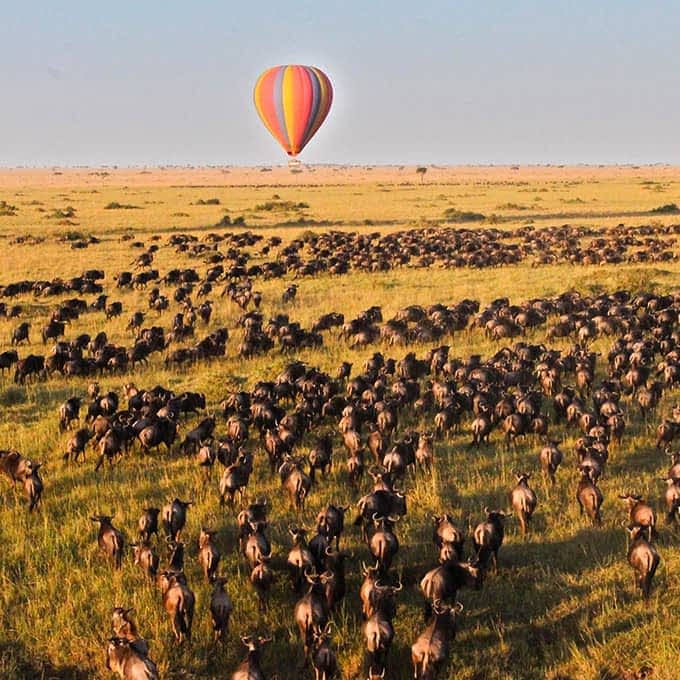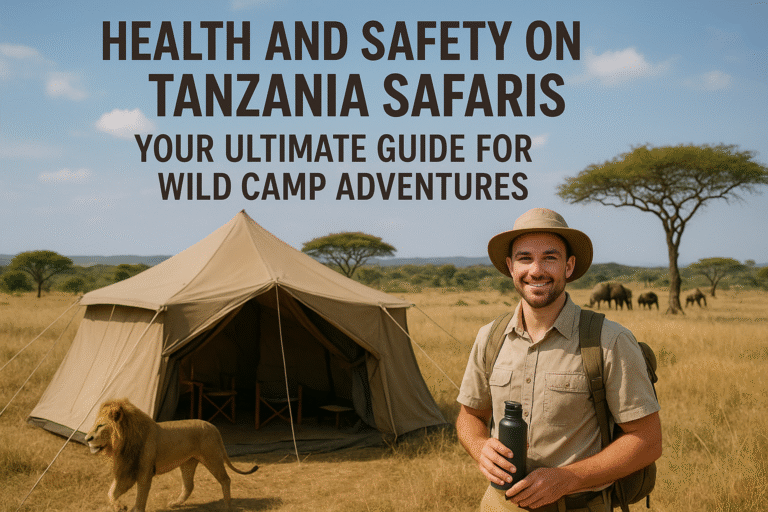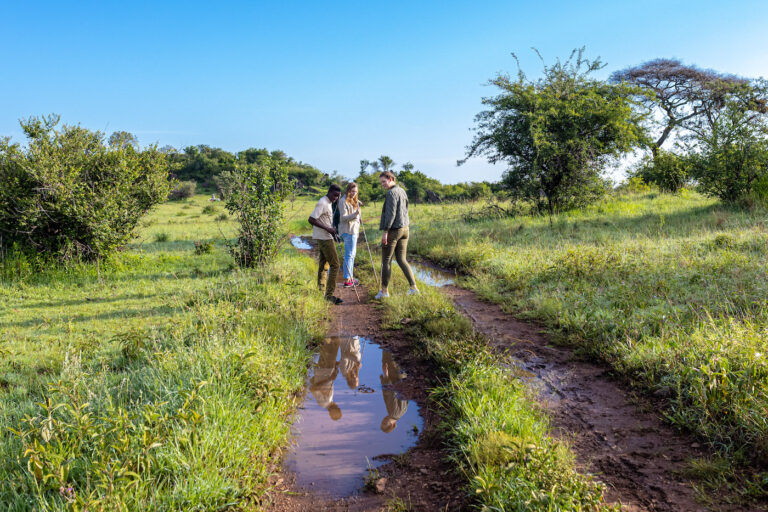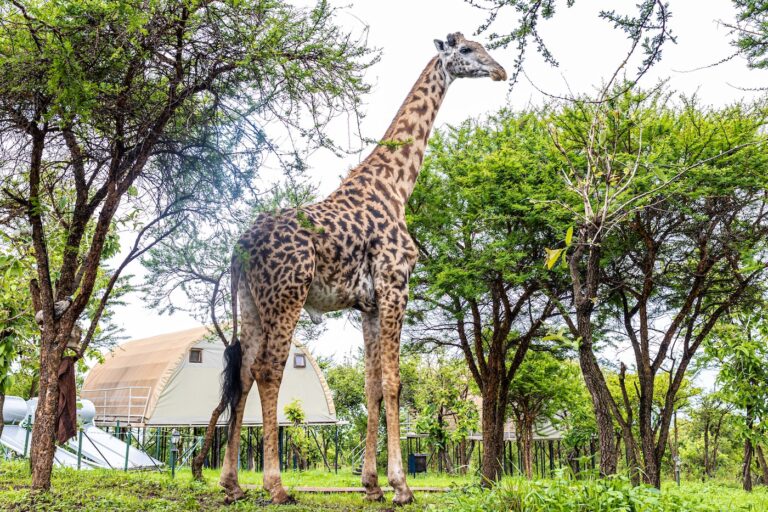Climate Change Impacts on Tanzania Wildlife
Imagine the vast Serengeti plains, once a predictable tapestry of golden grasses swaying under the African sun, now disrupted by erratic rains that flood rivers one season and leave them as cracked earth the next. As the Great Migration’s thunderous herds falter in their ancient rhythms, Tanzania’s wildlife faces an invisible adversary: climate change. At Tanzania Wild Camps, we’ve witnessed these shifts firsthand from our eco-conscious outposts in the Serengeti and Ngorongoro, where climate change Tanzania safaris are evolving into urgent calls for conservation. This isn’t just an environmental headline—it’s reshaping the soul of East Africa’s wild heart, from altered migration paths to resilient wildlife adaptation Serengeti species. In this comprehensive exploration, we’ll delve into the profound effects on Tanzania’s biodiversity, highlight adaptive miracles in the wild, and spotlight sustainable camp initiatives that are turning the tide. As we approach 2026, understanding these dynamics isn’t optional for safari enthusiasts; it’s essential for preserving the magic that draws us to these lands.
Tanzania, home to over 20% of Africa’s large mammal species, is a biodiversity powerhouse, with icons like the Serengeti National Park and Ngorongoro Crater drawing millions annually. Yet, as global temperatures rise—projected to increase by 1.5-3°C in East Africa by 2050—these ecosystems are on the frontlines. Rising seas threaten coastal mangroves, while inland savannas grapple with prolonged droughts and intensified floods. For safari-goers, this means climate change Tanzania safaris may encounter sparser herds or unexpected blooms, but it also opens doors to meaningful, eco-focused journeys. At Tanzania Wild Camps, our commitment to low-impact tourism ensures that every guest contributes to resilience, blending adventure with advocacy in one of the world’s most vulnerable wildlife havens.
How Climate Change is Reshaping Tanzania's Ecosystems
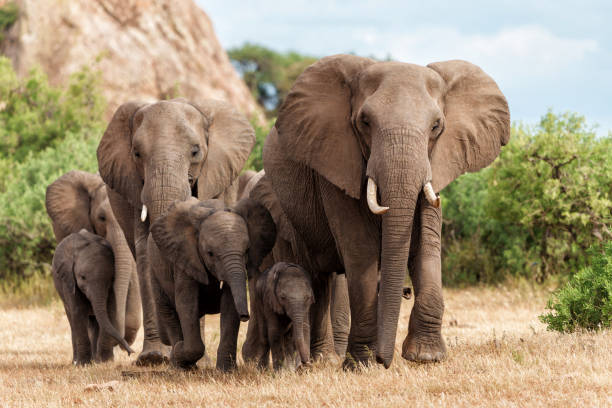
Climate change in Tanzania manifests through a cocktail of extremes: hotter temperatures, erratic rainfall, and rising sea levels, all amplified by the country’s equatorial position. In 2025, reports highlight how these shifts are already altering habitats, with savannas drying out and montane forests facing unprecedented fires. The Serengeti, a UNESCO World Heritage Site spanning 14,750 square kilometers, is sending stark signals: prolonged droughts are shrinking water sources, forcing animals into human-wildlife conflicts as they seek sustenance beyond park boundaries.
One of the most visible casualties is the Great Migration, the planet’s largest terrestrial movement involving 1.5 million wildebeest, zebras, and gazelles. Disrupted rainfall patterns—shorter wet seasons and heavier, unpredictable downpours—are throwing migration routes into chaos. In the Mara-Serengeti ecosystem, weakened rivers like the Mara are disrupting paths, straining predator-prey dynamics and jeopardizing species survival. Droughts exacerbate this, leading to starvation, dehydration, and increased poaching of weakened animals. For instance, elephant populations in Tarangire National Park are migrating farther for water, clashing with farming communities and heightening risks.
Biodiversity hotspots like Ngorongoro Crater face similar threats. This 600-meter-deep caldera, teeming with 25,000 animals, is experiencing habitat degradation from rising temperatures and habitat loss. Black rhinos, already critically endangered with fewer than 200 in Tanzania, are hit hard by water scarcity, reducing breeding success and increasing vulnerability to disease. Changing food availability disrupts ecosystems: Grasses wither, forcing herbivores like buffalo to adapt or perish, while carnivores like lions face leaner hunts. In mountainous regions like Kilimanjaro and the Eastern Arc, warmer conditions are pushing species upslope, compressing habitats and threatening endemics like the Abbott’s duiker.
Wildlife corridors—vital lifelines connecting parks—are on the brink. In areas like the Western Serengeti, human encroachment combined with climate stress fragments these pathways, isolating populations and reducing genetic diversity. The ripple effects? Declining animal numbers, as seen in the Mara-Serengeti where populations dip due to extreme weather. For climate change Tanzania safaris, this translates to altered viewing experiences: Fewer mega-herds in traditional spots, but opportunities to witness resilience in action.
Wildlife Adaptation in the Serengeti: Nature's Fight for Survival
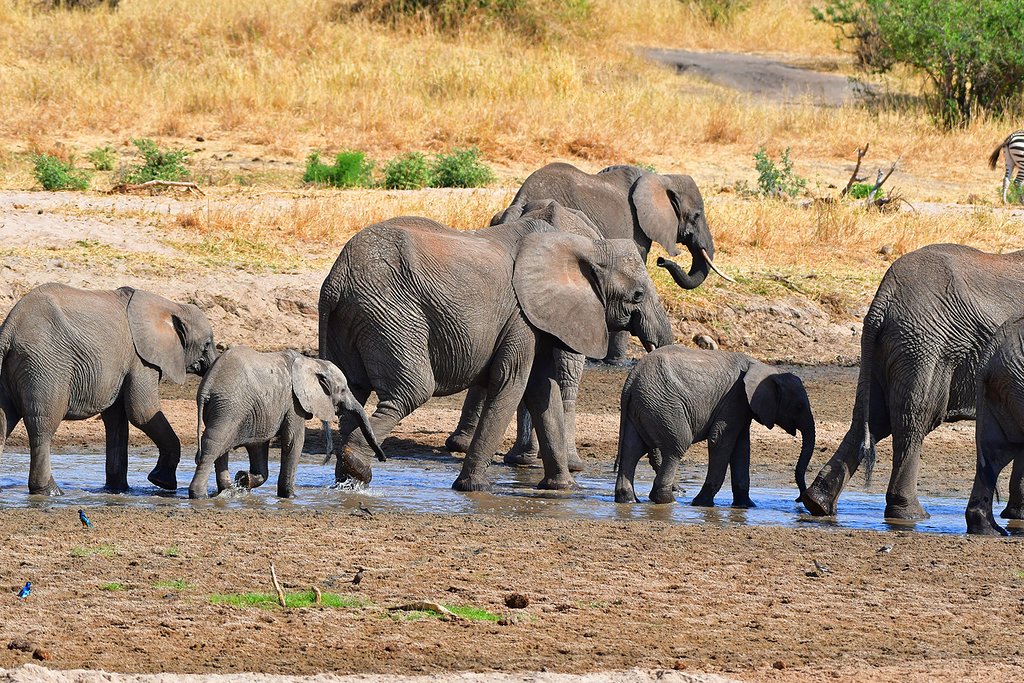
Amid the turmoil, Tanzania’s wildlife is showcasing remarkable wildlife adaptation Serengeti strategies, offering glimmers of hope. The Serengeti ecosystem, with its fluctuating rainfall—varying up to three times annually—has long bred tough survivors. Wildebeest, the migration’s keystone species, are emerging as climate heroes: Their grazing suppresses wildfires, reducing carbon emissions, while their movements boost soil carbon sequestration by 15% for every 100,000 additional animals. In heavier rainy seasons, prolonged greenery may favor wildlife, though it disrupts seasonal movements.
Predators are adapting too. Lions in the Serengeti are shifting territories in response to prey scarcity, forming larger prides for cooperative hunting amid droughts. African wild dogs, endangered with packs dwindling, are altering hunt times to cooler dawns, conserving energy in rising heat. Elephants, facing water shortages, are digging deeper wells—known as “elephant pumps”—that benefit other species, fostering interspecies alliances.
Birdlife adapts dynamically: Migratory species like European rollers arrive earlier due to warmer springs, syncing with insect booms. In fire-prone zones, vegetation loss from blazes—intensified by dry spells—leaves animals exposed, but resilient grasses rebound, supporting herbivores like zebras that switch to tougher forages. Human activity amplifies challenges, but the Serengeti’s vastness buffers impacts compared to smaller reserves. At our Serengeti Wild Camp, guests observe these adaptations up close: A herd of wildebeest detouring around a parched plain, or cheetahs exploiting new prey patterns in the changing landscape.
These adaptations underscore nature’s ingenuity, but they’re not infinite. Without intervention, tipping points loom—such as the loss of the Serengeti’s migratory essence if droughts persist. Conservation efforts, including new zones in 2025, aim to protect corridors and enhance resilience.
Sustainable Camp Initiatives: Pioneering Eco-Friendly Solutions
In the face of these challenges, sustainable camp initiatives are Tanzania’s beacon of hope, and at Tanzania Wild Camps, we’re at the forefront. Our properties—Serengeti Safari Lodge, Serengeti Wild Camp, Ikoma Wild Camp, and Ngorongoro Wild Camp—embody eco-luxury, minimizing footprints while maximizing impact.
Solar power lights our tents, reducing carbon emissions by 80% compared to generators. We use sustainable materials like locally sourced bamboo and canvas, ensuring minimal environmental disruption. Water conservation is key: Rainwater harvesting and greywater recycling preserve scarce resources, vital in drought-hit areas. Our zero-plastic policy and composting cut waste, while partnerships with Maasai communities fund anti-poaching patrols and habitat restoration.
Inspired by industry leaders like Olakira Migration Camp, which relocates seasonally to follow herds without permanent scars, we offer fly camping—temporary, low-impact setups that immerse guests in the bush responsibly. In 2025, Tanzania’s push for eco-friendly safaris includes carbon-offset programs and community-led tourism, aligning with our ethos. Guests at Ngorongoro Wild Camp participate in tree-planting, directly combating deforestation, while our Serengeti outposts support wildebeest monitoring to track climate adaptations.
These initiatives not only shield wildlife but empower locals: Revenue shares fund education and healthcare, reducing poaching incentives. By choosing us, travelers join a movement—our camps have conserved over 500 hectares through guest contributions alone.
Tips for Eco-Conscious Safaris in a Changing Climate
Planning climate change Tanzania safaris? Opt for dry seasons (June-October) for reliable sightings, but prepare for variability. Pack reusables, support carbon-neutral flights, and choose operators like ours with ethical credentials. Engage in citizen science: Report sightings via apps to aid research. For wildlife adaptation Serengeti viewing, join guided walks at dawn, when animals are most active.
Safeguarding Tanzania’s Wild Legacy
As climate change reshapes Tanzania’s wildlife tapestry, from disrupted migrations to heroic adaptations, the call to action echoes across the savannas. Sustainable camp initiatives like those at Tanzania Wild Camps are proving that luxury and conservation can coexist, preserving the Serengeti’s roar for generations. In 2025 and beyond, your safari choice matters—opt for impact. Explore our eco-packages at tanzaniawildcamps.com or email info@tanzaniawildcamps.com to book a journey that protects as it inspires. The wild awaits—let’s ensure it endures.


